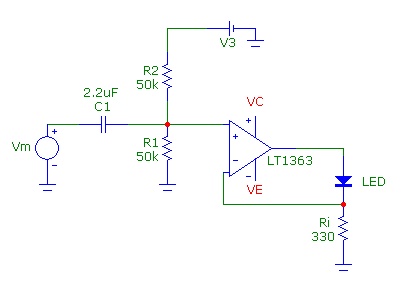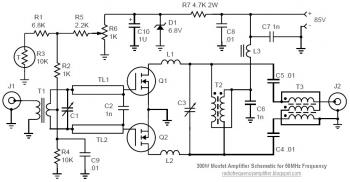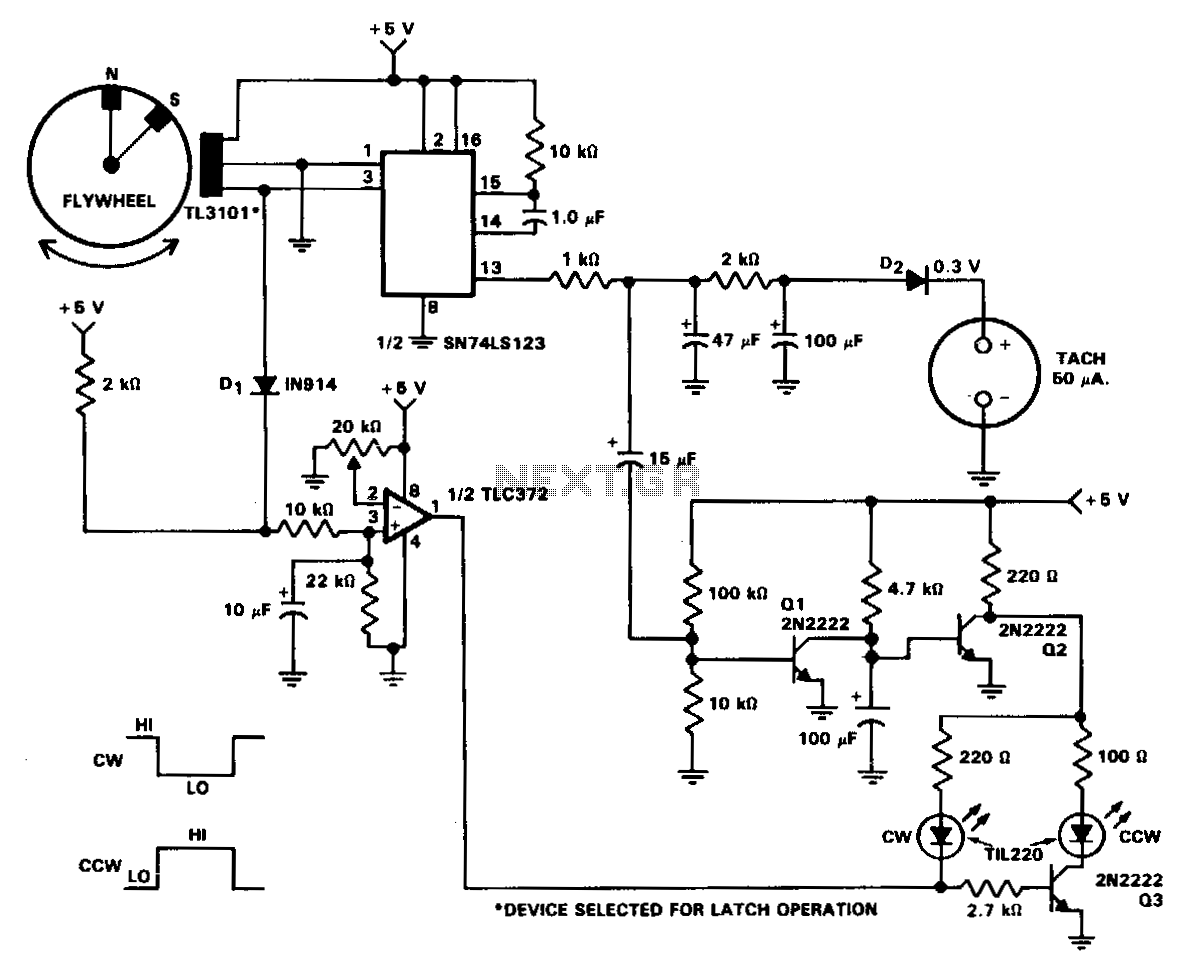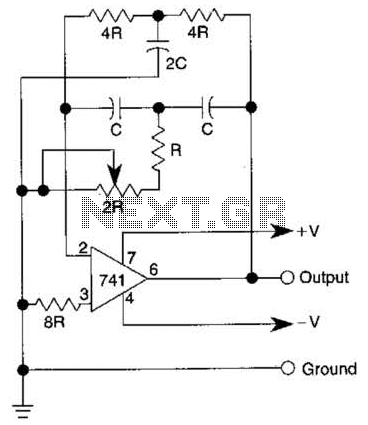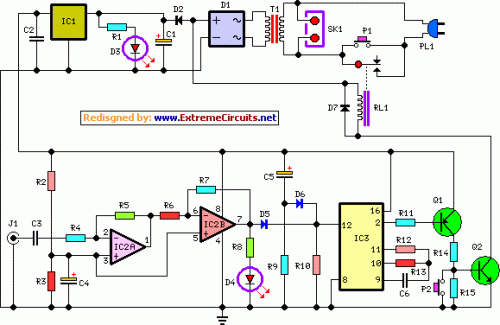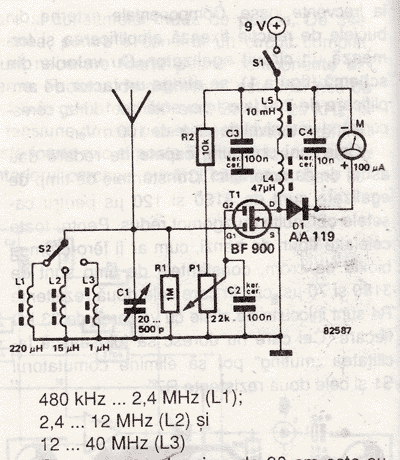
Motion-detection Digital Camera circuit
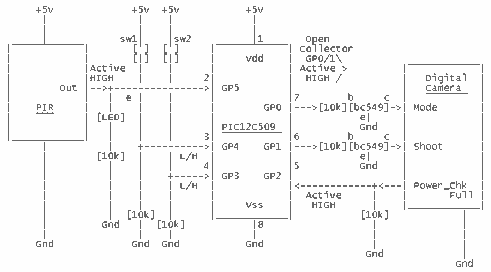
When the sensor detects movement in a room it will take a burst of 10 photos with the digital camera. Each photo is taken at 0.5sec interval. After the 10 photos, the camera waits 3 seconds for further movement and if it is detected, the process is repeated until 80 photos are taken. The photos can then be downloaded to your PC (via the USB connection on the board) for viewing. More: The camera module is 640 x 480 (High Resolution). Each photo is approximately 115k. In Low Resolution mode the photos are: 352 x 288. The photos are approx. 35kB. The camera is CMOS and has 16Mb internal RAM, that is cleared when the battery is flat or
The described system utilizes a motion sensor to trigger a digital camera module, which captures a sequence of images upon detecting movement within a designated area. The camera, capable of operating in both high resolution (640 x 480 pixels) and low resolution (352 x 288 pixels), is equipped with a CMOS sensor and features 16 MB of internal RAM for temporary image storage.
Upon detecting movement, the system initiates a sequence where it captures 10 consecutive images at 0.5-second intervals. This rapid capture allows for a brief moment of activity to be documented effectively. After completing the burst of 10 photos, the system enters a waiting phase of 3 seconds, during which it continuously monitors for further movement. If additional movement is detected within this timeframe, the photo-capturing sequence is repeated, with a maximum limit of 80 photos.
The images captured in high resolution are approximately 115 kB each, while those taken in low resolution are around 35 kB. This difference in file size is significant for storage considerations, particularly given the camera's 16 MB of RAM, which will be cleared when the battery is depleted.
To facilitate user access to the captured images, the camera module includes a USB connection, allowing for easy transfer of photos to a personal computer for viewing and management. This feature enhances the usability of the system, making it practical for various applications, including security monitoring and event documentation. The design of this system emphasizes efficiency in capturing and storing images while providing the user with straightforward methods for accessing the data.When the sensor detects movement in a room it will take a burst of 10 photos with the digital camera. Each photo is taken at 0.5sec interval. After the 10 photos, the camera waits 3 seconds for further movement and if it is detected, the process is repeated until 80 photos are taken.
The photos can then be downloaded to your PC (via the USB connection on the board) for viewing. The camera module is 640 x 480 (High Resolution). Each photo is approximately 115k. In Low Resolution mode the photos are: 352 x 288. The photos are approx. 35kB The camera is CMOS and has 16Mb internal RAM, that is cleared when the battery is flat or 🔗 External reference
The described system utilizes a motion sensor to trigger a digital camera module, which captures a sequence of images upon detecting movement within a designated area. The camera, capable of operating in both high resolution (640 x 480 pixels) and low resolution (352 x 288 pixels), is equipped with a CMOS sensor and features 16 MB of internal RAM for temporary image storage.
Upon detecting movement, the system initiates a sequence where it captures 10 consecutive images at 0.5-second intervals. This rapid capture allows for a brief moment of activity to be documented effectively. After completing the burst of 10 photos, the system enters a waiting phase of 3 seconds, during which it continuously monitors for further movement. If additional movement is detected within this timeframe, the photo-capturing sequence is repeated, with a maximum limit of 80 photos.
The images captured in high resolution are approximately 115 kB each, while those taken in low resolution are around 35 kB. This difference in file size is significant for storage considerations, particularly given the camera's 16 MB of RAM, which will be cleared when the battery is depleted.
To facilitate user access to the captured images, the camera module includes a USB connection, allowing for easy transfer of photos to a personal computer for viewing and management. This feature enhances the usability of the system, making it practical for various applications, including security monitoring and event documentation. The design of this system emphasizes efficiency in capturing and storing images while providing the user with straightforward methods for accessing the data.When the sensor detects movement in a room it will take a burst of 10 photos with the digital camera. Each photo is taken at 0.5sec interval. After the 10 photos, the camera waits 3 seconds for further movement and if it is detected, the process is repeated until 80 photos are taken.
The photos can then be downloaded to your PC (via the USB connection on the board) for viewing. The camera module is 640 x 480 (High Resolution). Each photo is approximately 115k. In Low Resolution mode the photos are: 352 x 288. The photos are approx. 35kB The camera is CMOS and has 16Mb internal RAM, that is cleared when the battery is flat or 🔗 External reference
